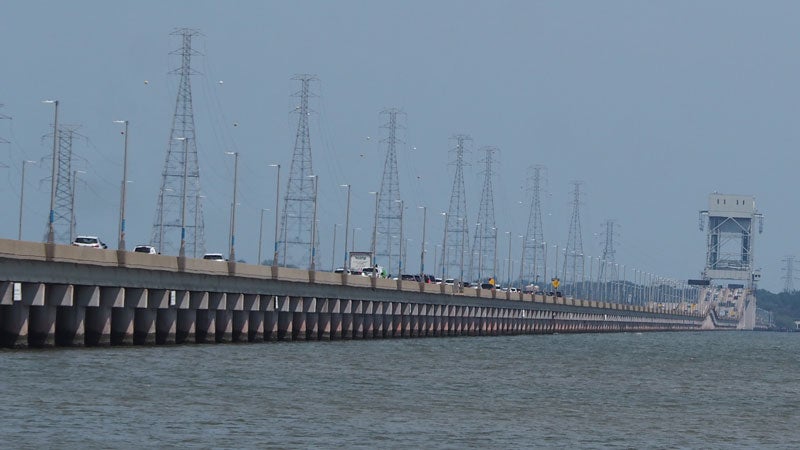James River gets a “C” grade for health
Published 5:25 pm Thursday, July 25, 2024

- James River Bridge (File photo)
The James River, for the 14th consecutive year, maintained the highest health score of any major tributary of the Chesapeake Bay, according to the James River Association, a nonprofit that monitors and advocates for the river and its tributaries.
The University of Maryland Center for Environmental Sciences recently released its 2023-24 Chesapeake Bay and Watershed Report Card rated the health of the bay at a C+ on an A-F scale, its highest score in more than 20 years. The grade is calculated based on seven bay indicators, including the condition of shellfish living at the bottom of the bay and water clarity, along with 12 watershed indicators, which include demographic criteria such as housing affordability and how many people can walk to a park 10 minutes from where they live.
The JRA, in a separate news release, graded the upper James at a “B.” The lower James, which includes Isle of Wight and Surry counties, received a “C.”
According to the JRA, the James saw signs of improvement in 2023, including reduced levels of algae, increased underwater grasses and continued high levels of dissolved oxygen, though its overall score dropped three points over the prior year due to a decline in water clarity and “benthic community,” which refers to the population of mollusks, crustaceans and other marine life on the seafloor.
“The Chesapeake Bay report card focuses on overall bay and watershed health, providing a wide-lens view of the overall ecosystem condition,” JRA Director of River Ecology Jamie Brunkow told The Smithfield Times.
“Residents play an essential role in helping to continue the progress with restoring the health of local waterways,” Brunkow said.
The association’s website, thejamesriver.org, states area residents can become involved in protecting the James by becoming a “RiverRat,” a group of volunteers who document potential pollution sources and their effects by walking along a neighborhood tributary or kayaking, or installing a rain barrel, which can reduce demand on sewer systems and protect groundwater quality.
The JRA also offers a cost-sharing program to residents who own property along tidal waterways in the lower James region. The program pays 75% of the cost to install a living shoreline, Brunkow said. The battlement-shaped cinderblock habitats, known as oyster castles, along the bank of the Cypress Creek in Smithfield’s Windsor Castle Park are an example of a living shoreline. The shellfish purify the tributary by feeding off organic material in the water while serving as a barrier to slow erosion of the shoreline.



